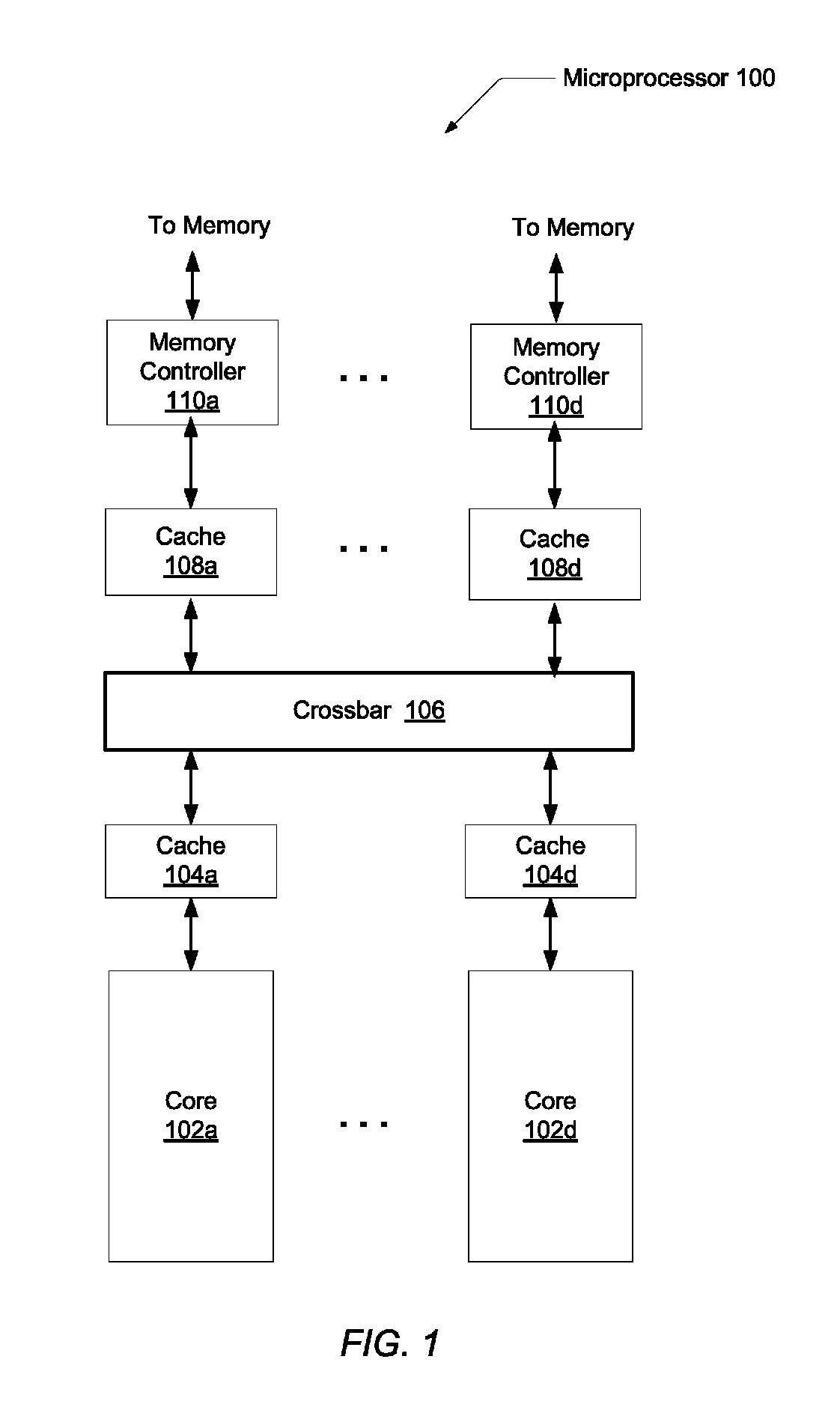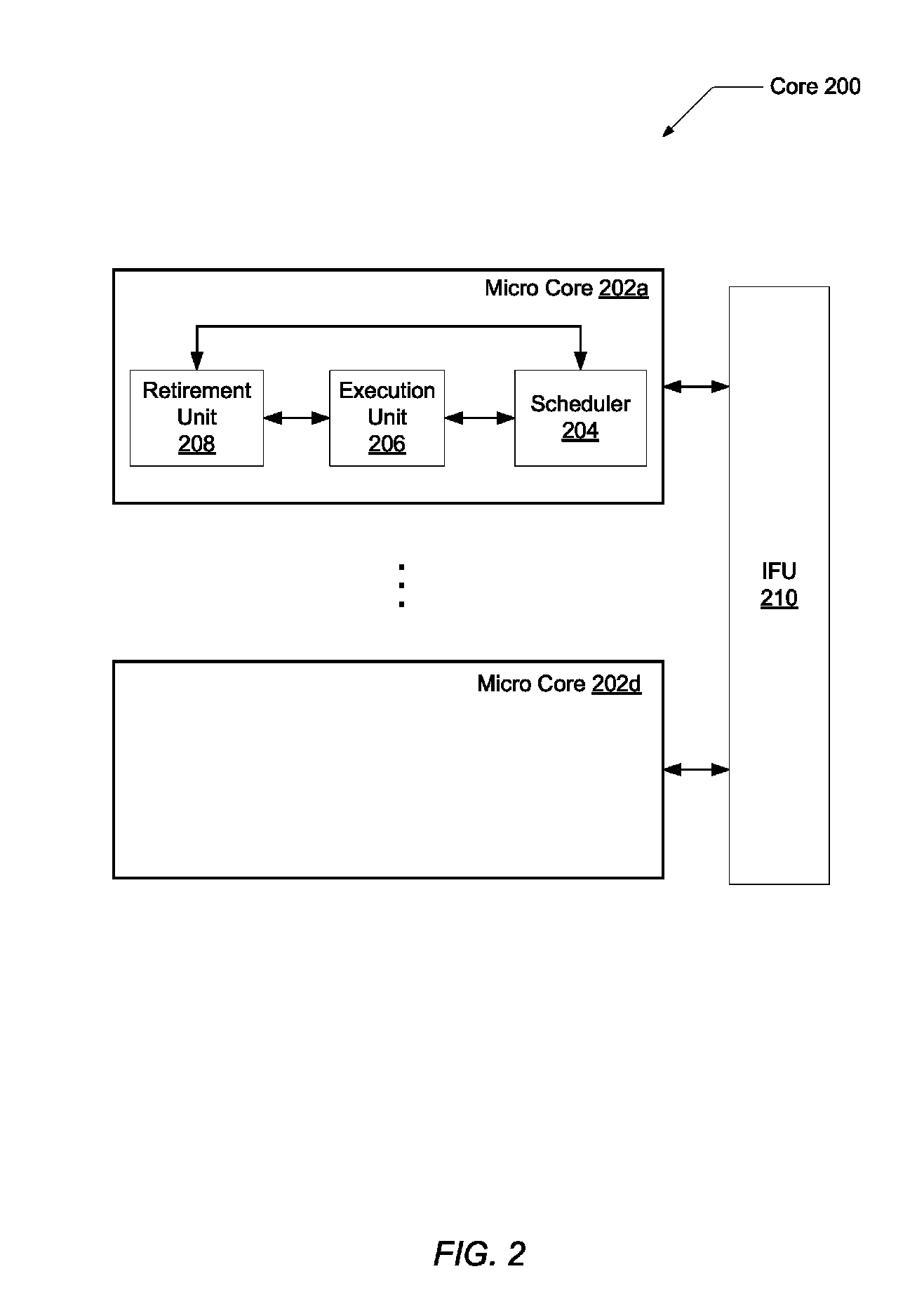Simultaneous speculative threading light mode
a light mode and simulation technology, applied in the field of microprocessors, can solve the problems of inability to sustain a good instruction stream rate, inability to manage resources within, and reduced throughput, and achieve the effect of increasing the system for the first thread
- Summary
- Abstract
- Description
- Claims
- Application Information
AI Technical Summary
Problems solved by technology
Method used
Image
Examples
Embodiment Construction
Referring to FIG. 1, one embodiment of a microprocessor 100 is shown. Microprocessor 100 may have multiple cores 102a-102d. As used herein, elements referred to by a reference numeral followed by a letter may be collectively referred to by the numeral alone. For example, cores 102a-102d may be collectively referred to as cores 102. Each core 102 may include a superscalar microarchitecture with one or more multi-stage pipelines. Also, each core 102 may be designed to execute multiple strands. Each core 102 may comprise a first-level cache or in other embodiments, the first-level cache 104 may be outside the core 102.
A crossbar 106 may be used to connect each core 102 and first-level cache 104 to shared resources such as second-level caches 108 and lower-level memory via memory controllers 110. Interfaces between crossbar 106 and the different levels of caches 104 and 108 may comprise any suitable technology. In other embodiments, other levels of caches may be present between cache 10...
PUM
 Login to View More
Login to View More Abstract
Description
Claims
Application Information
 Login to View More
Login to View More - R&D
- Intellectual Property
- Life Sciences
- Materials
- Tech Scout
- Unparalleled Data Quality
- Higher Quality Content
- 60% Fewer Hallucinations
Browse by: Latest US Patents, China's latest patents, Technical Efficacy Thesaurus, Application Domain, Technology Topic, Popular Technical Reports.
© 2025 PatSnap. All rights reserved.Legal|Privacy policy|Modern Slavery Act Transparency Statement|Sitemap|About US| Contact US: help@patsnap.com



